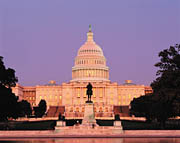
Six people were put on the agenda to testify at the hearing, including Jerry Howard, executive vice president and chief executive officer of the National Association of Home Builders (NAHB), as well as members of the insurance and medical/scientific communities. Executives of contractor associations, including Jim Hussey, chairman of the Air Conditioning Contractors of America (ACCA), and other organizations submitted written testimony.
From the NAHB’s perspective, Howard said, “The mold issue raises a number of legitimate questions that merit serious discussion and require further investigation. Unfortunately, many of the legitimate issues have become obscured by litigation and misleading information.”
Mold is “essentially a moisture-control issue,” he said. And it does not solely affect housing.
“All indoor environments must be considered if we are to comprehensively address this issue,” stated Howard.
NO CONCLUSIVE EVIDENCE
“Claims that construction materials and building techniques used in new home construction contribute to indoor mold growth have moved the home building industry to the center of the mold debate. Unfortunately, the claims offer only suppositions about the causes of indoor mold growth. There is no evidence that building designs and construction practices are responsible for the increase in mold claims. Moreover, there is no evidence that mold is more prevalent in newer homes than in older homes.”He related, “Many of the culprits identified as causes for the increase in mold in newer homes — drywall, carpeting, and air conditioners, to name a few — have been used in home construction for many years.… Yet the rise in lawsuits and media coverage has only occurred in the past few years.
“NAHB encourages efforts to find ways to help prevent or minimize the conditions that lead to mold growth and we support further research into construction practices, building materials, building design, and occupant practices to identify factors associated with mold growth.”
In addition, Howard said, “For most of us, mold is not harmful in the levels typically found in indoor environments,” and “no ‘safe’ or ‘unsafe’ permissible exposure levels exist.” Therefore, NAHB supports research on the potential health effects.
Regarding economic impact, he said, “Ultimately, the increased costs of insurance, potential litigation, and potentially burdensome regulations will adversely impact housing affordability.”
Because of the “absence of scientific data,” Howard said the association will continue to support additional research. “We are opposed, however, to legislative and/or regulatory action concerning mold that is not based upon scientifically sound and reliable data, that does not include regional flexibility, and that imposes requirements that are not cost effective, technically achievable, and attainable.”
The ACCA statement submitted by Hussey noted, “We understand the focus of your insurance investigation is coverage for homeowners. However, there is another aspect to the insurance crisis. Our members are especially vulnerable to liability claims, for often the first culprit named in a mold situation will be the HVACR system, even though HVACR systems do not cause mold. On the contrary, a well-functioning HVACR system and a well-trained, alert technician [are the] best defense against the spread of mold.”
He pointed out, “For the first 10 months of 2001, ACCA’s endorsed insurance carrier paid 350 mold claims for HVACR contractors alone. The cost was $17 million.… In reaction, the insurance industry is either filing for absolute mold exclusions on our business policies or severe restrictions on coverage (with appropriate increases in premiums).
“Even if the HVACR contractor does everything right, using state-of-the-art practices, he can still be sued.” And without adequate insurance coverage, a negative judgment could force the company out of business.
A primary contributor to the mold problem is the lack of “sound science,” Hussey wrote. “Many people spot mold and immediately hire an attorney, regardless of the type of mold. It doesn’t occur to them to first identify the mold through testing, which is every bit as important as remediation.
“This situation cries out for education,” he emphasized. Trained HVACR contractors can teach consumers “the techniques of inspection and moisture control, of the need for spotting leaks and once finding them, the proper response.”
In a letter to the committee, Jeffrey D. Shoaf, senior executive director, congressional relations, Associated General Contractors of America (AGC), commented, “Debates continue within the scientific community about exposure to mold and the medical community about the health effects related to this exposure.… The only thing that is certain is that more research is needed in both areas.
“Simple solutions to the problem are not apparent. Water intrusion and mold in buildings involves the design, construction, and operation and maintenance of these facilities,” he noted.
“Any regulatory or legislative actions must be based on credible scientific evidence that is not conclusive at this time,” he wrote. “The approach that we would favor would be for additional funding for research on the health effects of mold exposure in the built environment.”
Sidebar: ACCA’s Recommendations To Congress
Jim Hussey also presented the House members with a list of ACCA’s recommendations regarding mold, including:Publication date: 07/29/2002





